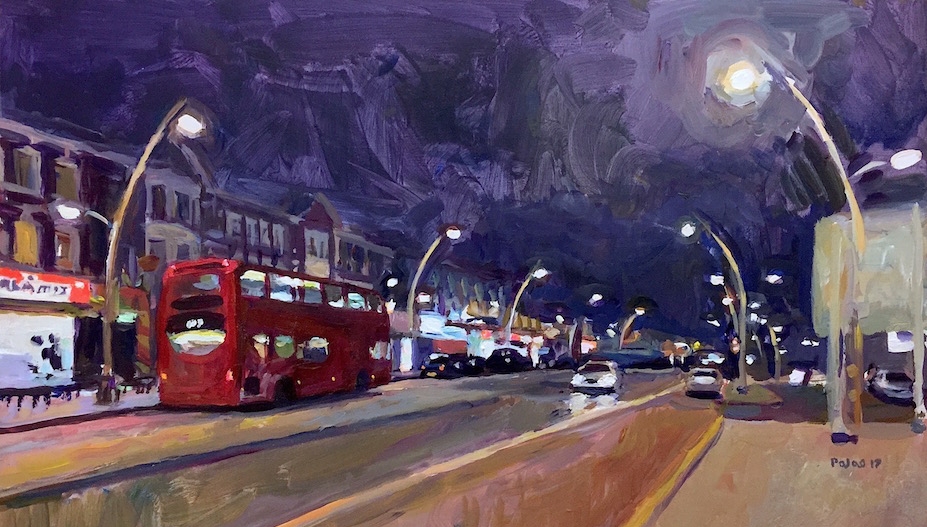When I embarked on creating a regular blog one of the recurring themes I had envisioned for it was a series of posts entitled ‘Creating a scene’ which would spotlight a particular painting I made, accompanied by a map of the location where it was made (inspired by the menu navigation map from a Playstation “Gran Tursimo” racing game!) plus unique anecdotes or descriptions on the creative process, exact materials used, etcetera. The idea, however, was placed on the shelf after only one full published post (about St Paul’s Cathedral), partly due to the fact that most of my subsequent painting output was more studio based work rather than plein air and the adventures that accompanied it. Although the idea of the location maps reflected my philosophy of capturing a sense of place, I was wary of demystifying my work.
I had also created a semi complete draft of another ‘Creating a scene’ article which, curiously enough, predated my first ever published posts. Looking once again at the draft I saw that revealed some of the thinking and design behind my early blogs, as well as insight into the creative production of an individual painting, the materials I was using at the time, recorded almost like a scientific experiment. The featured painting in the article dates from 2017 but I decided to dust off the writing and publish it here as a curious take on ‘what if’, with it’s original creation date, some two and half years on:
Creating a scene: “Cranbrook Road, Gants Hill IG2”
Cranbrook Road, Gants Hill, IG2 2017 acrylic on board 30 x 50 cm
The viewpoint in my painting of Cranbrook Road is based close to Gants Hill tube station (Central Line) near the roundabout. It faces south towards a parade of shops opposite. Though this street is reminiscent of many other places in London (such as Kilburn High Road with it's curved streetlamps) I was intrigued and enchanted by its ‘somewhere’ appeal. The parade of shops contains real local businesses, such as a kebab shop on the left, and a typical London bus (route 179) takes night time passengers towards Ilford from Central London accompanied by sparse traffic late at night.
At the time I was influenced by the painterly plein air work of Peter Brown with his urban street views. Unlike Brown, however, I generally tend to avoid adding pedestrians into my scenes where possible, preferring instead to utilise both parked and moving vehicles which give pictures a sense of scale, life and population. There is a quite a bit of detail in the painting but I left large portions as a loose as possible, as can be seen in the six progress photographs below.
Six images showing the progress of the painting from start to finish. The shape of the bus was awkward to paint without overworking the detail or losing the painterliness.
I commenced work in the studio June 27th, 2017 and, after several sessions lasting approximately an hour, I declared it finished October 16th, 2017. I used a custom sized MDF board primed with acrylic gesso. The artwork was made with Golden acrylics and also Cryla System 3 (for the fluorescent could accents and mixing for the inky night sky.)
I cropped the bottom linear edge by approximately 10mm to lower the position of the bus so as to stop it floating in the composition. The intermittency in working from start to finish is a common practice in my art practice as there is always a contemplation and reflection stage which can take longer than the actual painting time itself, rather like a game of chess.


